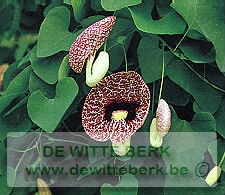Categorieen
- abelia
- acer
- amelanchier
- aronia
- buddleja
- callicarpa
- calycanthus
- camellia
- caragana
- carpinus
- caryopteris
- catalpa
- ceanothus
- cephalanthus
- cercis
- choisya
- clethra
- cornus
- corylopsis
- corylus
- cotinus
- cotoneaster
- crataegus
- deutzia
- diervilla
- edgeworthia
- elaeagnus
- eucalyptus
- euonymus
- exochorda
- fagus
- fatsia
- forsythia
- fothergilla
- fuchsia
- gleditsia
- hamamelis
- hedera
- heptacodium
- hibiscus
- hydrangea
- hypericum
- itea
- kolkwitzia
- leucothoe
- ligustrum
- liquidambar
- liriodendron
- lonicera
- loropetalum
- magnolia
- mahonia
- malus
- morus
- nandina
- nerium
- osmanthus
- parrotia
- perovskia
- philadelphus
- photinia
- physocarpus
- pieris
- pittosporum
- platanus
- potentilla
- prunus
- pyrus
- rhus
- ribes
- salix
- sambucus
- sarcococca
- skimmia
- sorbaria
- spiraea
- stephanandra
- stewartia
- styrax
- syringa
- tamarix
- tetrapanax
- tilia
- viburnum
- weigela
- acaena
- acanthus
- achillea
- agapanthus
- agastache
- ajuga
- alchemilla
- allium
- alyssum
- amsonia
- anaphalis
- anchusa
- anemone
- antennaria
- artemisia
- aruncus
- aster
- astilbe
- aubrieta
- bergenia
- brunnera
- calamintha
- campanula
- centaurea
- centranthus
- ceratostigma
- chelone
- chrysanthemum
- cimicifuga
- coreopsis
- crocosmia
- darmera
- delphinium
- dianthus
- doronicum
- echinacea
- echinops
- erigeron
- eupatorium
- euphorbia
- filipendula
- fragaria
- gaillardia
- galium
- gaura
- geranium
- geum
- gypsophila
- helenium
- helianthemum
- helianthus
- helleborus
- hemerocallis
- heuchera
- hosta
- houstonia
- iberis
- iris
- isotoma
- kalimeris
- knautia
- kniphofia
- lamiastrum
- lamium
- lavatera
- leucanthemum
- lewisia
- liatris
- ligularia
- liriope
- lupinus
- lysimachia
- lythrum
- nepeta
- oenothera
- ophiopogon
- pachysandra
- penstemon
- persicaria
- phlomis
- phlox
- physalis
- physostegia
- prunella
- pulmonaria
- pulsatilla
- rodgersia
- rudbeckia
- salvia
- sanguisorba
- santolina
- saponaria
- sedum
- solidago
- stachys
- symphytum
- teucrium
- thalictrum
- thymus
- tiarella
- tradescantia
- verbena
- veronica
- vinca
- waldsteinia
- abelia
- acer
- amelanchier
- aronia
- buddleja
- callicarpa
- calycanthus
- camellia
- caragana
- carpinus
- caryopteris
- catalpa
- ceanothus
- cephalanthus
- cercis
- choisya
- clethra
- cornus
- corylopsis
- corylus
- cotinus
- cotoneaster
- crataegus
- deutzia
- diervilla
- edgeworthia
- elaeagnus
- eucalyptus
- euonymus
- exochorda
- fagus
- fatsia
- forsythia
- fothergilla
- fuchsia
- gleditsia
- hamamelis
- hedera
- heptacodium
- hibiscus
- hydrangea
- hypericum
- itea
- kolkwitzia
- leucothoe
- ligustrum
- liquidambar
- liriodendron
- lonicera
- loropetalum
- magnolia
- mahonia
- malus
- morus
- nandina
- nerium
- osmanthus
- parrotia
- perovskia
- philadelphus
- photinia
- physocarpus
- pieris
- pittosporum
- platanus
- potentilla
- prunus
- pyrus
- rhus
- ribes
- salix
- sambucus
- sarcococca
- skimmia
- sorbaria
- spiraea
- stephanandra
- stewartia
- styrax
- syringa
- tamarix
- tetrapanax
- tilia
- viburnum
- weigela
- acaena
- acanthus
- achillea
- agapanthus
- agastache
- ajuga
- alchemilla
- allium
- alyssum
- amsonia
- anaphalis
- anchusa
- anemone
- antennaria
- artemisia
- aruncus
- aster
- astilbe
- aubrieta
- bergenia
- brunnera
- calamintha
- campanula
- centaurea
- centranthus
- ceratostigma
- chelone
- chrysanthemum
- cimicifuga
- coreopsis
- crocosmia
- darmera
- delphinium
- dianthus
- doronicum
- echinacea
- echinops
- erigeron
- eupatorium
- euphorbia
- filipendula
- fragaria
- gaillardia
- galium
- gaura
- geranium
- geum
- gypsophila
- helenium
- helianthemum
- helianthus
- helleborus
- hemerocallis
- heuchera
- hosta
- houstonia
- iberis
- iris
- isotoma
- kalimeris
- knautia
- kniphofia
- lamiastrum
- lamium
- lavatera
- leucanthemum
- lewisia
- liatris
- ligularia
- liriope
- lupinus
- lysimachia
- lythrum
- nepeta
- oenothera
- ophiopogon
- pachysandra
- penstemon
- persicaria
- phlomis
- phlox
- physalis
- physostegia
- prunella
- pulmonaria
- pulsatilla
- rodgersia
- rudbeckia
- salvia
- sanguisorba
- santolina
- saponaria
- sedum
- solidago
- stachys
- symphytum
- teucrium
- thalictrum
- thymus
- tiarella
- tradescantia
- verbena
- veronica
- vinca
- waldsteinia
Aristolochia durior
€ 18,00
| Maat | Eenheidsprijs | >24 | >100 |
|---|
| CO 2 L 80.100 | € 18.00 | - | - |
|---|---|---|---|
| CO 50.60 | € 18.00 | - | - |
| Maatcode | Omschrijving | Maatcode | Omschrijving |
|---|---|---|---|
| 020.40 | hoogte of breedte bij aankoop: 20 - 40 cm | CO | plant in container |
| 040.60 | hoogte of breedte bij aankoop: 40 - 60 cm | C | plant in container |
| 060.80 | hoogte of breedte bij aankoop: 60 - 80 cm | C2...C4.. | plant in 2..4 liter pot |
| 080.100 | hoogte of breedte bij aankoop: 80 - 100 cm | CSTR | struik in container |
| 100.125 | hoogte of breedte bij aankoop: 100 - 125 cm | CHS08.10 | hoogstammige boom in pot; stamhoogte: 220 cm; stamomtrek: 8/10 cm |
| 125.150 | hoogte of breedte bij aankoop: 125 - 150 cm | BOS | bossig struikje, grootte in cm |
| 150.175 | hoogte of breedte bij aankoop: 150 - 175 cm | BW | jonge haagplant met blote wortel, grootte in cm |
| 175.200 | hoogte of breedte bij aankoop: 175 - 200 cm | STAM | plant met stamlengte van ……cm |
| 200.250 | hoogte of breedte bij aankoop: 200 - 250 cm | P9 | plant in pot van 9 cm |
| 250.300 | hoogte of breedte bij aankoop: 250 - 300 cm | P12 | plant in pot van 12 cm |
| 300.350 | hoogte of breedte bij aankoop: 300 - 350 cm | KLIM | klimplant |
| CO5L | plant in pot van 5 L | ||
| HS06.08 | hoogstammige boom met blote wortel; stamhoogte: 220 cm; stamomtrek: 6/8 cm | ||
| HS08.10 | hoogstammige boom met blote wortel; stamhoogte: 220 cm; stamomtrek: 8/10 cm | V150.175 | geveerde, gevormde haagplant met lengte….. |
| HS10.12 | hoogstammige boom met blote wortel; stamhoogte: 220 cm; stamomtrek: 10/12 cm | V175.200 | geveerde, gevormde haagplant met lengte….. |
| HS12.14 | hoogstammige boom met blote wortel; stamhoogte: 220 cm; stamomtrek: 12/14 cm | V200.250 | geveerde, gevormde haagplant met lengte….. |
| HS14.16 | hoogstammige boom met blote wortel; stamhoogte: 220 cm; stamomtrek: 14/16 cm | V250.300 | geveerde, gevormde haagplant met lengte….. |
| DRK16.18 | hoogstammige boom met draadkluit; stamhoogte: 220 cm; stamomtrek: 16/18 cm | ||
| DRK18.20 | hoogstammige boom met draadkluit; stamhoogte: 220 cm; stamomtrek: 18/20 cm | ZCSTR | zware struik in pot |
| DRK20.25 | hoogstammige boom met draadkluit; stamhoogte: 220 cm; stamomtrek: 20/25 cm | LEI | leivorm bij fruitgoed |
| DRK25.30 | hoogstammige boom met draadkluit; stamhoogte: 220 cm; stamomtrek: 25/30 cm | LEI 2V | Leivorm bij fruitgoed: dubbel V |
| LEI 2U | Leivorm bij fruitgoed: dubbel U | ||
| DRKL | boom met draadkluit | ||
| STR3/5 | struik, blote wortel, 3-5 takken | ||
| STR5/8 | struik, blote wortel, 5-8 takken | ||
| KL | boom met kluit | ||
| LEI12.16 | voorgeleide boom met voorgeleide takken, meestal 4 etages op 200-250-300-350cm | ||
| DAK12.14 | voorgeleide boom met dakstructuur, stamhoogte 240-260cm | ||
| nbsp; | |||
| C1.5 ST | Plant in 1,5L pot Gestokt : Aangebonden aan bamboestok |
WB-PALLET waarborg pallet
<100M2TRAN transportkosten: minder dan 100 m2
| Bloemkleur |
|
|---|---|
| Bloeimaand |
|
| Categorie |
|
| Hoogte volwassen plant |
|
| Snelselectie |
|
| Bloemvorm |
|
| Grondsoort |
|
| Speciaal |
|
| Vormen |
|
| Standplaats |
|
| Afstand |
|
Aristolochia durior
De nederlandse naam is "Pijpbloem", familie van de Aristolochiaceae. De bloemkleur is purperbruin en de bloeitijd is van ca. juni. De bladeren zijn groen. De volwassen hoogte van deze heester is ca. 500 cm. Verdraagt een temperatuur tot -20 gr. C. Klimplant, heeft een opvallende bladkleur.
Geschikt voor een niet te droge plaats.
Waar de grondwaterstand wisselt bv. langs oevers of sloten, laag gelegen terreinen enz. Met een zo nu en dan matig droge tot licht vochtige grond, die in het voorjaar of winter heel kort kan onderlopen, neutraal tot kalkhoudend is en bestaat uit voedselrijk zand maar liever leem of klei. Half zonnig tot lichte schaduw, liefst koel. Te combineren met vaste planten van het type bosrand- en borderplant maar niet te dicht er op.
Onderhoud etc.:
Deze plant heeft heel veel ruimte nodig. De bloei is interessant, maar valt niet op; hij zit verscholen onder het blad. Snoei in het voorjaar in de gewenste vorm. De scheuten slingeren zich om niet te dik steunmateriaal (gaas, buizen, boomtakken).
De nederlandse naam is "Pijpbloem", familie van de Aristolochiaceae. De bloemkleur is purperbruin en de bloeitijd is van ca. juni. De bladeren zijn groen. De volwassen hoogte van deze heester is ca. 500 cm. Verdraagt een temperatuur tot -20 gr. C. Klimplant, heeft een opvallende bladkleur.
Geschikt voor een niet te droge plaats.
Waar de grondwaterstand wisselt bv. langs oevers of sloten, laag gelegen terreinen enz. Met een zo nu en dan matig droge tot licht vochtige grond, die in het voorjaar of winter heel kort kan onderlopen, neutraal tot kalkhoudend is en bestaat uit voedselrijk zand maar liever leem of klei. Half zonnig tot lichte schaduw, liefst koel. Te combineren met vaste planten van het type bosrand- en borderplant maar niet te dicht er op.
Onderhoud etc.:
Deze plant heeft heel veel ruimte nodig. De bloei is interessant, maar valt niet op; hij zit verscholen onder het blad. Snoei in het voorjaar in de gewenste vorm. De scheuten slingeren zich om niet te dik steunmateriaal (gaas, buizen, boomtakken).


